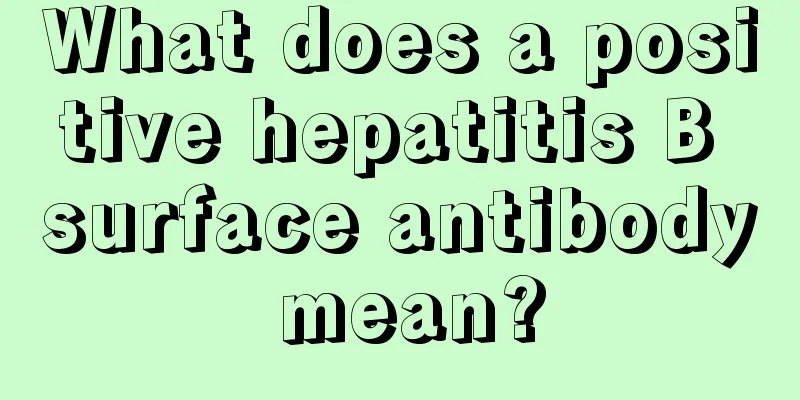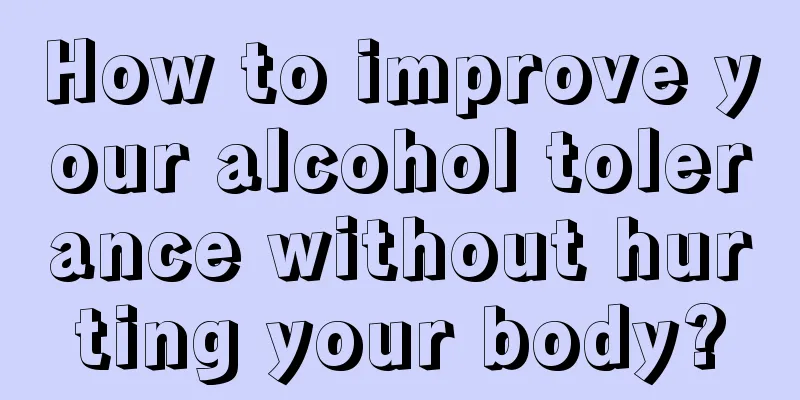What does a positive hepatitis B surface antibody mean?

|
If the test results show that the hepatitis B surface antibody is positive, it means that the body has the ability to resist the hepatitis B virus, and the higher the quantity of the hepatitis B surface antibody, the stronger the protection it will produce. The positive status of hepatitis B surface antibody does not completely mean that the patient will not develop viral hepatitis, so everyone should also take preventive measures. Hepatitis B surface antibody is an immune and protective antibody against the hepatitis B virus. Its positivity indicates that the person has been infected with the hepatitis B virus in the past but the virus has been eliminated, or that the person has been vaccinated with the hepatitis B vaccine and has produced protective antibodies. The higher the hepatitis B surface antibody titer in the serum, the stronger the protection. However, there are a small number of people who are positive for hepatitis B surface antibodies and yet develop hepatitis B. This may be due to infection with a different subtype or a mutation of the hepatitis B virus. The positive appearance of hepatitis B surface antibody means that among the five hepatitis B serum markers, the antigen is a component of the virus itself, while the antibody is a product of the body's immune response, and their clinical significance is different. Hepatitis B surface antibody (anti-HBs) is a protective antibody that often appears positive in the late stage of infection recovery, when the hepatitis B surface antigen (HBsAg) has turned negative for at least 1 month. Anti-HBs reaches its peak in June-December, then gradually decreases and turns negative within 10 years (sometimes it turns negative very quickly). Appearance time The early or late appearance of hepatitis B surface antibodies is related to whether the person has been infected with the hepatitis B virus in the past. The onset of symptoms is slower in people who are first infected with hepatitis B virus, and earlier in those who are reinfected. In most cases, surface antibodies appear 4 to 5 months after infection with the hepatitis B virus, but the titer is not high and gradually disappears after 0.5 to 3 years. In those who are reinfected, hepatitis B surface antibody can generally be detected within 2 weeks, and the titer is relatively high. |
<<: What is the best treatment for stubborn urticaria
>>: What are the side effects of lipolysis injection for face slimming?
Recommend
What's the matter with the watery stomach
Discharge from the stomach may be caused by gastr...
A simple way to do moxibustion on your own
As a traditional Chinese medicine therapy method,...
How to take better care of hamartoma
For ordinary people, because they do not understa...
Symptoms of neurological disorders
Patients with neurological disorders often have u...
Introduction to some nursing methods after esophageal cancer surgery
Esophageal cancer patients should all know that t...
The dangers of drinking beer in the morning
The harm of drinking beer in the morning will cau...
Miraculous effect! Women can prevent breast cancer by eating mangoes
Breast cancer is a common malignant tumor in wome...
Diet chart for ovarian cancer chemotherapy patients
Ovarian cancer is a common clinical malignant tum...
Chemotherapy for esophageal cancer
Chemotherapy for esophageal cancer has been evolv...
How much does it cost to treat rectal cancer
Rectal cancer is caused by the malignant transfor...
Can I take a bath during the 30 days of confinement?
When the confinement period reaches 30 days, the ...
Which hospital is good for treating uterine cancer
Which hospital is good for treating uterine cance...
What is the treatment for Helicobacter pylori
Many gastrointestinal diseases are very common in...
Solutions to irritability
As the pressure of life increases, people are suf...
How do tinea versicolor form? The reasons are these
Pityriasis versicolor is also known as tinea vers...









